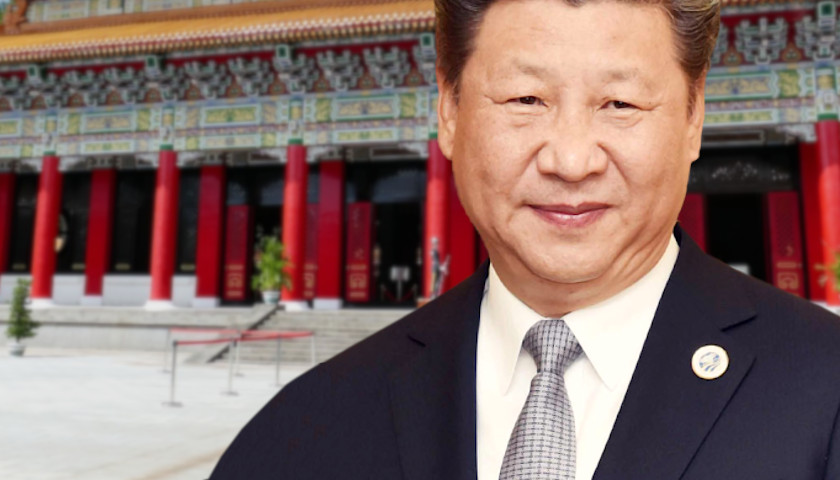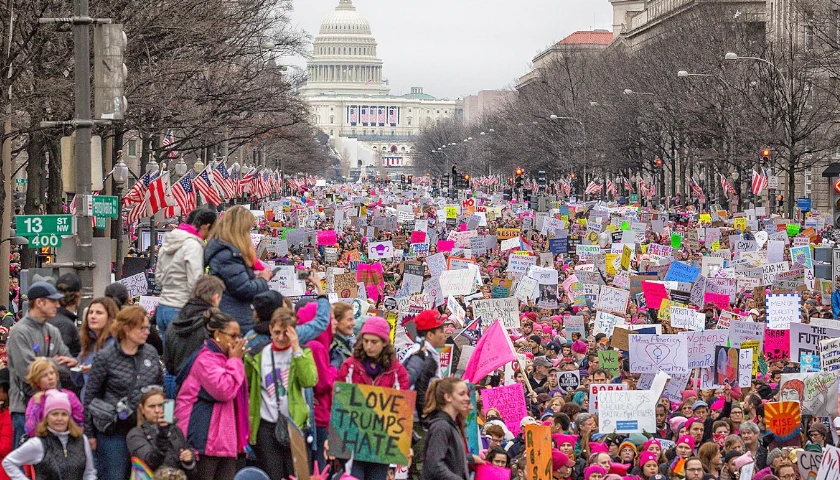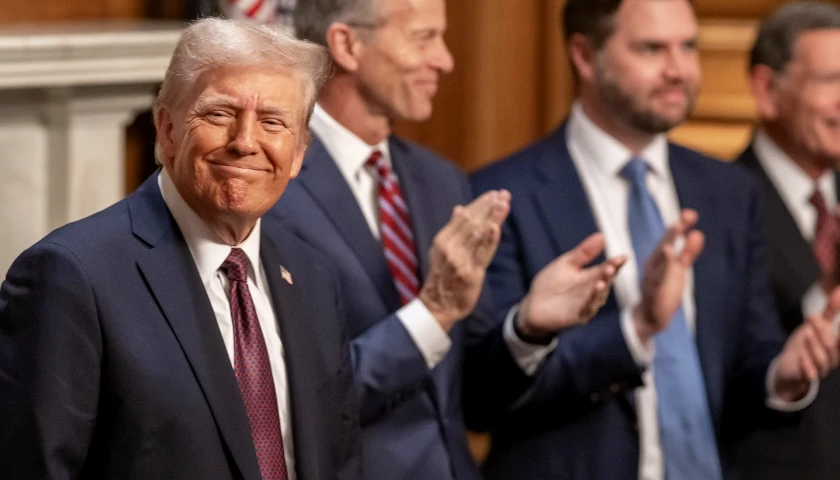by Curtis Ellis
The virus that originated in Wuhan, China poses a double threat to America.
The first is to our health as the virus spreads through the U.S. population. The second is to our economy as more businesses, schools, and events shut down to slow the spread of the contagion.
We must not underestimate the economic threat because the Chinese Communist Party is using the pandemic to achieve its goal of supplanting the United States as the world’s leading economic, diplomatic, and military power.
Sounds unbelievable?
A new report from Horizon Advisory consultants details Beijing’s post-virus strategy—already operational—to leverage the pandemic to seize global market share in key industries, further global dependence on Chinese manufacturing, and reverse efforts in the United States and elsewhere to decouple from the People’s Republic.
“Beijing intends to use the global dislocation and downturn to attract foreign investment, to seize strategic market share and resources—especially those that force dependence, and to proliferate global information systems; to as Chinese sources put it, ‘leap-frog’ industrially, ‘overtake around the corner’ strategically, capture the ‘commanding heights’ globally. Beijing intends to reverse recent U.S. efforts to counteract China’s subversive international presence; at the same time to chip away at U.S.-Europe relations. In other words, Beijing will use COVID-19 to accelerate its long-standing, strategic offensive,” the Horizon report states.
We’re witnessing Beijing’s attempt to scrub its culpability for the pandemic from the world’s memory. Chinese Communist propagandists declare, “China is owed a thank you for buying the world time” and the New York Times dutifully repeats it.
After covering up the novel infection and unleashing it on the world, Beijing’s rulers bought up the world’s supply of protective gear and respirators.
Then they sell these critical goods to Italy while portraying themselves as the heroic humanitarian savior of the world, not unlike a pyromaniac who takes credit for calling the fire department.
Now, as China’s factories come back online at the same time the West’s economies shut down, Beijing sees further opportunity to extend its soft power and tighten its grip on global supply chains.
Don’t take my word for it. Authoritative policymakers and leading players in China’s government-industrial system have told us.
The Horizon Advisory report draws on their writings and statements.
On March 12, Song Zhiping, representative to the 15th Party Congress, former party committee secretary, and chairman of the state-owned China National Building Materials Group Corporation declared:
China will “turn crisis into opportunity: It will transform and upgrade and strengthen its position in the international industry chain.” Chinese enterprises “must not just resume production. They must also boost economic development and exposure to the world in order to speed up the adjustment of the industrial structure, to enhance competitiveness in the international industrial chain, and to build an advance strategic positioning.”
That comes directly from the Horizon report.
The CCP Central Committee identifies industries to “seize in the adjustment of the international industrial chain while fighting the epidemic and resuming production.” These include 5G construction, urban high-speed rails, urban rail transit, new energy vehicles, big data in infrastructure, artificial intelligence, automobiles, electronics, ships, aviation, power equipment, and machine tools.
Han Jian of the Chinese Academy of Sciences and director of the Ministry of Civil Affairs’ China Industrial Economics Association put it more succinctly on March 4: “It is possible to turn the crisis into an opportunity—to increase the trust and the dependence of all countries around the world of ‘Made in China.’”
The Chengdu municipal government echoed the party line on March 5, calling on enterprises and individuals:
to focus on turning crisis into opportunity: Make full use of the important window after the epidemic and focus on the strategic opportunities such as the new technological revolution it will bring about, the new international market demand, and the shortcomings of supply which will need to be filled . . . Deeply integrate into the global supply chain system in the fields of biomedicine, electronic information, intelligent manufacturing, and agricultural products.
Beijing’s post-pandemic plan and the industries mentioned above are in line with its longstanding “Made in China 2025” strategy for global dominance of crucial industries.
Moreover, Beijing sees an opportunity in the pandemic to reverse President Trump’s call to move manufacturing out of China.
In a report on the economic effects of the Wuhan virus, China’s State Administration of Science, Technology, and Industry for National Defense (SASTIND), stated: “China will get more opportunities, including in the reduction of pressure for the international industrial chain to transfer away from China . . . The global epidemic has provided opportunities for improving China’s international position and countering anti-globalization.”
An expert from the Beijing Administrative Review Committee put it this way:
With the globalization of the epidemic and the general frustration of the global economy, Western countries’ reliance on China ’s economy and markets will deepen, and the United States’ use of the epidemic to accelerate its ‘decoupling’ from China is likely to be counterproductive . . . China’s policy drive for anti-epidemic conversion has fostered strong manufacturing, including of masks, medical devices, and technology systems. All can become new growth points for China’s foreign aid and exports, thus providing strong support for the international radiation of China’s soft and hard power . . . The U.S. economy meanwhile will decline.
“The third decade of the 21st century,” he concludes, “is launched with China’s fight against the epidemic—with it the structural improvement of China’s interaction with the world economy and a breakthrough in China’s global role.”
China plans to target the very industries hit hardest by the pandemic and use the same predatory practices it has used in the past to subjugate the world’s industries.
The State Administration of Science, Technology, and Industry for National Defense lays out the strategy: “Accurately support industries affected by the global spread of the new epidemic, proliferate information technology and other industries overseas to help fight the epidemic, and pave the way for international market expansion after the epidemic is over.”
Not to put too fine a point on it, “proliferate information technologies” means wheeling out techno-surveillance Trojan Horses, integrating temperature monitoring with facial recognition, big data, artificial intelligence, and government-monitored social credit scores.
Beijing has a plan to gain ground after the setback it experienced from the Wuhan virus. It is deploying all its resources—industrial, economic, and information—to achieve its goal.
Remember that when you hear “respected voices” such as the U.S. Chamber of Commerce, the National Association of Manufacturers or the Peterson Institute for International Economics call for lifting tariffs on China.
Like the New York Times, they are simply swallowing Beijing’s sophisticated propaganda.
– – –
Curtis Ellis is policy director with America First Policies. He was also a senior policy advisor with the Donald J. Trump presidential campaign in 2016.
Photo “Xi Jinping” by Narendra Modi. CC BY-SA 2.0.





